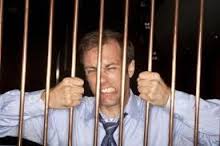 The Canadian bankruptcy regime was designed with two key purposes in mind – provide options to ‘honest but unfortunate’ debtors struggling with an unmanageable financial load and create an orderly means for creditors to recover amounts owed them. With the potential for abuse ever present, the Office of the Superintendent of Bankruptcy (OSB) has ways and means to detect and deal with offenders.
The Canadian bankruptcy regime was designed with two key purposes in mind – provide options to ‘honest but unfortunate’ debtors struggling with an unmanageable financial load and create an orderly means for creditors to recover amounts owed them. With the potential for abuse ever present, the Office of the Superintendent of Bankruptcy (OSB) has ways and means to detect and deal with offenders.
Has your company experienced an uptick in once good paying customers suddenly going past due, into consumer proposals or bankrupt? As a collection agency Edmonton, collection agency Calgary and collection agency GTA we can help.
What constitutes a bankruptcy offence?
The common theme pervading bankruptcy offences under the Bankruptcy and Insolvency Act (BIA) is the intent by the debtor to deceive creditors and escape repayment with impunity. Offences can involve:
Documentation – falsifying a statement of account or hiding or destroying related documentation
Property – hiding or removing property or disposing of it at unfair, below-market values before or after bankruptcy
Credit – obtaining credit or good using false representations or without duly disclosing the bankruptcy to the creditor
BIA investigation – failing to cooperate fully and honestly with BIA examinations
Detection methods
Although the OSB has detection programs in place, bankruptcy offences are often discovered through complaints made by creditors. The Licensed Insolvency Trustee (LIT) may also uncover reasons for suspicion during the course of the bankruptcy process. The OSB may also learn of underhanded dealings through help by the members of the public.
Whichever means by which an offence comes to light, it must undergo examination by one of three special investigation units and always in association with the Royal Canadian Mounted Police (RCMP).
Serious Penalties – Case By Case
Offences under the BIA are punishable in a number of possible ways. Past cases have often involved imprisonment or other restrictions on personal liberty, such as probation, house arrest or curfew orders. Penalties may also include orders to perform community service or prohibitions from applying for credit. In most cases, the fraudulent bankrupt is ordered to pay amounts in restitution to the trustee.
The RCMP regularly reports bankruptcy fraud convictions on its website and its annals should serve as a warning to those who are tempted to use bankruptcy as an all-expense-paid free ride out of debt.
The original article was posted on http://www.gdlaw.ca/ and is available here: http://www.gdlaw.ca/blog/2016/10/bankruptcy-and-insolvency-act-offences-types-detection-penalties.shtml
Gehlen Dabbs is a commercial litigation law firm, with a primary focus on insolvency solutions and commercial disputes. They can be reached at 604-757-9380.